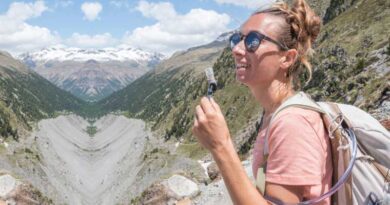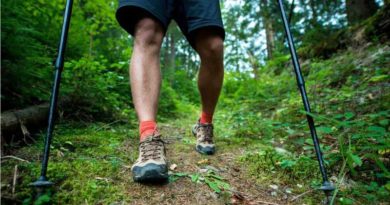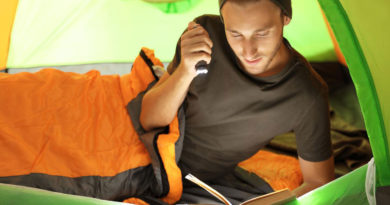What to Wear Hiking in 70-Degree Weather?
Hiking in the winter is simple, the cooler it is the more layers of clothes you put on. But the opposite of this technique doesn’t work, that is, the hotter it gets, the more clothes you take off. It even gets trickier when the days are hot and the nights are hot. This is common, especially in the spring season. So, the clothing choice for this kind of weather (around 70°F) requires careful selection. Some of the choices can be completely counterintuitive. You have to choose the right clothes that are breathable and stay dry. But in some cases, you want your clothes to stay wet longer so that evaporation keeps you cool.
Choose the Right Fabric
What type of fabric you should depends on the weather conditions. The weather in the summer can be of two types:
- Dry heat
- Humid heat
Fabric for Dry Heat
You might have heard that cotton is not a suitable fabric for outdoors because it absorbs moisture and takes longer to dry. But in some cases, you can use this to your advantage. In areas with dry heat, say, the Grand Canyon in Arizona, your body loses a lot of water through sweat evaporation.
To use your sweat to your advantage, you can wear cotton in areas with dry heat. Cotton would absorb your sweat and take longer to dry. The evaporation from your clothes would provide a cooling effect. But if there is a chance of the temperature dropping in the evening, you will have to change your clothes.
However, sweaty clothes do cause chaffing as they rub against the skin and smell which is not everyone’s cup of tea. In that case, you can wear synthetic fabric and consume more water with electrolytes.
Fabric for the Humid Heat
The human body deals with heat by sweating. The evaporation from the sweat cools the body down. But during humid heat, sweat doesn’t evaporate. To cool down, the body accelerates sweating. The sweat starts to accumulate on the body causing chaffing and smell to the point where you can develop a skin rash.
If you are hiking somewhere in Florida during the summer, the temperature can get hot and humid. As a man once said about Florida, “took a bath on Monday – Friday, still not dry”. The best fabric to deal with humid heat is a synthetic fabric like polyester or nylon. Synthetic fabrics repel moisture, wick moisture away from the body, and dry fast.
What Type of Clothes?
The following are the critical consideration about hiking clothes:
Light Colors
When hiking at 70°F or above, choose light colors. Light colors reflect sunlight rather than absorb it. A darker color absorbs sunlight which keeps raising your body temperature. Shirts, shorts, and pants with white tan or khaki color should be preferred.
Breathable Clothing
Choose loose clothing that lets you breathe well will allow you to better regulate your body temperature. Usually, nylon and polyester are good choices but as mentioned above, based on the weather, you can use cotton as well.
UPF-Rated Clothes
Choose UPF-rated clothing. While all clothing blocks the sun rays, UPF-rated coating provides guaranteed protection. Common ratings include UPF 15, 30, and 50+. The higher the UPF rating the more protection you get from the sunlight.
Put on a Hat
A hat protects the neck and the face from the sun. When talking about putting on a hat, many people put on a baseball cap. A baseball cap provides so-so shade. Choose a sun hat that has a 360° brim. It will provide complete shade from the sun.
Wear Shorts
Hiking in 70°F, you should probably wear shorts if you are not hiking directly in the sun. Shorts are more breathable than pants and they also allow more mobility. It is even better to get a pair of convertible pants for versatility. There are slight disadvantages of convertible pants but they are negligible compared to the value and convenience they provide.
Wear the Right Socks
While it is mentioned above that you can wear cotton during dry heat, it is not true for socks. Never wear cotton socks. Choose socks with synthetic fabric because cotton socks absorb sweat and become uncomfortable in the boots. Also, choose the right size of socks. Socks too big will form wrinkles that rub against your skin and socks too small can cause pressure points and sock slippage.
Other Ways to Stay Cool
There are some other ways to stay cool on the tail:
Avoid the Hottest Time of the Day
The hottest time of the day is between 1 p.m. to 3 p.m. You should plan your hike at a time that you avoid the hottest time of the day altogether. Either you start early morning and end your hike before noon or you start your hike sometime after 3 p.m.
Stay in the Shade
While planning a hike, choose a path that’s going to keep you under the shade most of the time. The shade can either be trees or canyon walls. Direct exposure to sunlight for long periods on a hot day can exhaust you quickly and can even become a problem in some cases.
Use the Vents
Hot weather hiking pants, shorts, and shirts have vents in them to dump heat. These vents prevent overheating. You should use them often when hiking in 70°F weather. The vents add to the breathability of the clothes and allow sweat to escape as well.
Stay Hydrated
You must stay hydrated throughout the way. Hiking on hot days can make you lose excess water. If you fail to keep yourself hydrated, you may fall victim to heat-related illnesses like cramps, heat exhaustion, and even heat stroke.
While you may have a water reservoir in your backpack, you should keep a water bottle at the ready that is easy to access. A hydration pack is even better as you can have a sip tube always at the ready so you won’t have to reach for your bottle.




